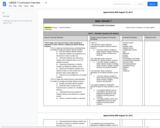
7th Grade Regular Math: Course Scope & Sequence.
- Subject:
- Mathematics
- Material Type:
- Full Course
- Provider:
- Liberty Public Schools
- Date Added:
- 08/15/2017

7th Grade Regular Math: Course Scope & Sequence.

The purpose of this task is to help students interpret signed numbers in a context as a magnitude and a direction and to make sense of the absolute value of a signed number as its magnitude.
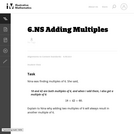
This task asks students to explore multiples of 6.

Remember your multiplication tables? ... me neither. Brush up on your multiplication, division, and factoring skills with this exciting game. No calculators allowed! The students will be given mutiplication and division problems which they must answer. They also have the option of being given a number then stating the factors of how that number was attained using either multiplication or division.

This series of word problems requires students to apply the concepts of factors and common factors in a context.

This word problem requires students to use fractions to solve it.

Adafruit founder Limor Fried and program manager Federico Gomez Suarez explain how computers represent numbers, text, images, and sound using tiny electric signals.

There are two aspects to fluency with division of multi-digit numbers: knowing when it should be applied, and knowing how to compute it. While this task is very straightforward, it represents the kind of problem that sixth graders should be able to recognize and solve relatively quickly.
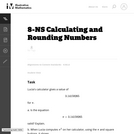
This task is intended for instructional (rather than assessment) purposes, providing an opportunity to discuss technology as it relates to irrational numbers and calculations in general. The task gives a concrete example where rounding and then multiplying does not yield the same answer as multiplying and then rounding.
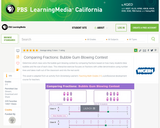
In this interactive activity adapted from Anneberg Learner’s Teaching Math Grades 3–5, compare fractions on number lines to determine which class of students wins bubble-gum-blowing contests.
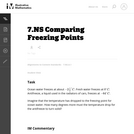
This task is appropriate for assessing student's understanding of differences of signed numbers. Because the task asks how many degrees the temperature drops, it is correct to say that "the temperature drops 61.5 degrees." However, some might think that the answer should be that the temperature is "changing -61.5" degrees. Having students write the answer in sentence form will allow teachers to interpret their response in a way that a purely numerical response would not.
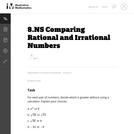
This task can be used to either build or assess initial understandings related to rational approximations of irrational numbers.
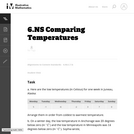
The purpose of the task is for students to compare signed numbers in a real-world context.
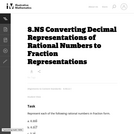
Standard 8.NS.1 requires students to "convert a decimal expansion which repeats eventually into a rational number." Despite this choice of wording, the numbers in this task are rational numbers regardless of choice of representation. For example, 0.333 and 1/3 are two different ways of representing the same number.
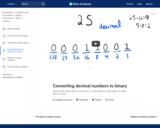
Learn a technique for converting decimal numbers into binary numbers using just pen, paper, and calculations. Works best for small numbers, since bigger numbers require increasingly more calculations. Created by Pamela Fox.
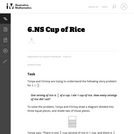
One common mistake students make when dividing fractions using visuals is the confusion between remainder and the fractional part of a mixed number answer.
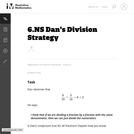
The purpose of this task is to help students explore the meaning of fraction division and to connect it to what they know about whole-number division.

Review how the decimal number system works before diving into the binary number system. The decimal number system and binary number system work the same way; the only difference is what each digit represents (0-9 versus 0/1). Created by Pamela Fox.
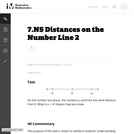
The purpose of this task is meant to reinforce students' understanding of rational numbers as points on the number line and to provide them with a visual way of understanding that the sum of a number and its additive inverse (usually called its "opposite") is zero.
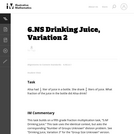
This task builds on a fifth grade fraction multiplication task and uses the identical context, but asks the corresponding ŇNumber of Groups UnknownÓ division problem.